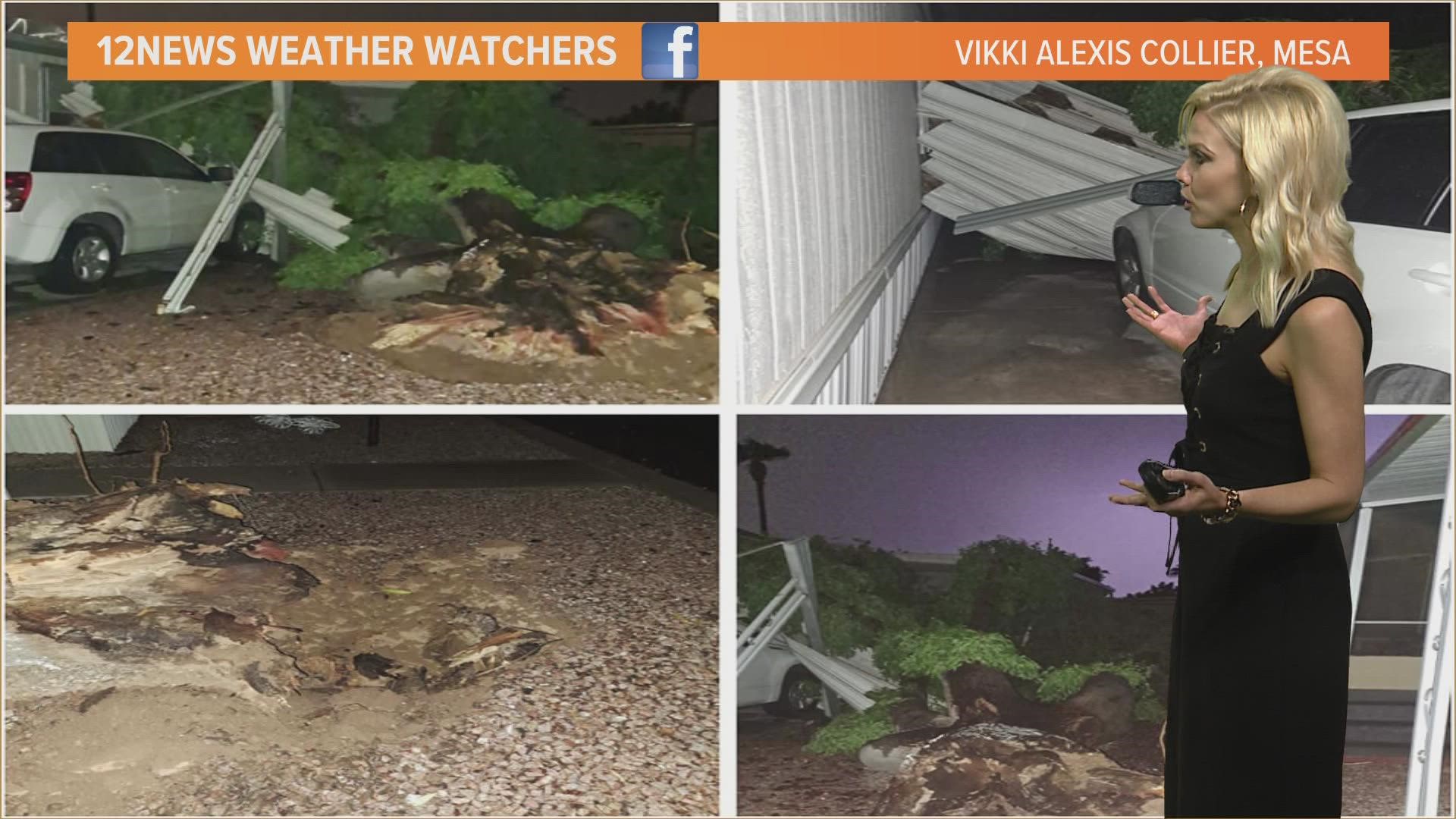BLACK CANYON CITY, Ariz. — Editor's note: The above video is from a previous broadcast.
About 15 miles outside of Black Canyon City stands one of the rainiest peaks near the Valley. But why does Towers Mountain get feet of rain when the rest of the area sees only inches?
This calendar year alone, Towers Mountain received 24.41 inches of rain. That's almost five times as much rain as many areas in Phoenix.
Tucked up in the Bradshaw Mountains, this monitoring station is one of the Flood Control District of Maricopa County's highest and wettest rain gages.
How much rain does Towers Mountain get?
This monitoring station literally sits at the top of Towers Mountain's peak. At 7,630ft in elevation it receives an average of 23.39 inches of rain per Water Year.
"It’s also not uncommon for that particular gauge to see well over 10” during the summer monsoon or over 30” for the Water Year," explained Flood Control District Meteorologist Daniel Henz. "For example, the gauge received nearly 18” of rain last monsoon season."
Although the data collection hasn't finished, the Towers Mountain monitoring station already recorded 30.51 inches of rainfall this Water Year. That's about 6 inches more than what shows up for the calendar year.
But what's the difference between a Water Year and a calendar year anyway?
A calendar year runs from Jan. 1 to Dec. 31, but a water year lasts from Oct. 1 of one year to Sept. 30 of the next.
That's done because precipitation that falls as snow doesn't melt and drain until the following spring or summer, making it hard to measure in the calendar year that it falls.
There are still a few weeks before the Water Year is over, so we don't have a full picture of how much rainfall will be measured on Towers Mountain. Still, rainfall totals on the mountain are already well above average.
What makes Towers Mountain so wet?
Towers Mountain overlooks the town of Crown King, and it's one of the highest peaks in the Bradshaw Mountain Range. With heavy forests and several hiking trails, it's a stark contrast to the deserts below.
Mountains are great accumulators for precipitation. Hot humid air that gets pushed over the mountain is rapidly cooled, meaning rain, snow, and clouds quickly form.
As for the Bradshaw Mountain Range, it's not part of the Colorado Plateau which makes up Arizona's High Country. That means it's one of the best geographical features in the area to block and catch that moisture.
Because Towers Mountain is one of the highest peaks, it receives the most direct precipitation.
So with a rain gauge literally in the clouds, Towers Mountain sees a lot of water compared to us down in the Valley!


Arizona Weather
Drought, wildfires, heat and monsoon storms: Arizona has seen its fair share of severe weather. Learn everything you need to know about the Grand Canyon State's ever-changing forecasts here:

